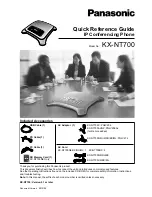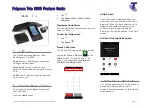
3. TECHNICAL BRIEF
- 26 -
Copyright © 2013 LG Electronics. Inc. All right reserved.
Only for training and service purposes
LGE Internal Use Only
Copyright © 2007 LG Electronics. Inc. All right reserved.
Only for training and service purposes
LGE Internal Use Only
/ 131
3. TECHNICAL BRIEF
3.2.2 Power On Sequence
The PMU handles the powering ON and OFF of the handset. There are three ways to power-on the
handset system :
1. Push PWRKEY (Pull the PWRKEY pin to the low level)
Pulling PWRKEY low is the typical way to turn on the handset. The VCORE buck converter will be turned-
on first, and then VA/VIO LDOs turn-on at the same time. After VA/VIO turn-on, VUSB LDOs, and finally
VRF/VTCXO LDOs will be turn on. The supplies for the baseband are ready and then the system reset
ends at the moment when the VCORE/VA/VIO/VUSB/VRF/VTCXO are fully turned-on to ensure the
correct timing and function. After that, baseband would send the PWRBB signal back to PMU for
acknowledgement. To successfully power-on the handset, PWRKEY should be kept low until PMU
receives the PWRBB from baseband.
2
. RTC module generate PWRBB to wakeup the system
If the RTC module is scheduled to wakeup the handset at some time, the PWRBB signal will directly send
to the PMU. In this case, PWRBB becomes high at the specific moment and let PMU power-
on just like
the sequence described above. This is the case named RTC alarm.
3. Valid charger plug-in (CHRIN voltage is within the valid range)
Charger plugging-in will also turn on the handset if the charger is valid (no OVP take place). However, if
the battery voltage is too low to power-on the handset (UVLO state), the system won‘t be turned-on by
any of these three ways. In this case, charger will charge the battery first and the handset will be
powered-on automatically as long as the battery voltage is high enough.
Under-voltage Lockout (UVLO)
The UVLO state in the PMU prevents startup if the initial voltage of the main battery is below the 3.2V
threshold. It ensures that the handset is powered-on with the battery in good condition. The UVLO
function is performed by a hysteretic comparator which can ensure the smooth power-on sequence. In
addition, when the battery voltage is getting lower and lower, it will enter UVLO state and the PMU will
be turned-off by itself, except for Vrtc LDO, to prevent further discharging. Once the PMU enters UVLO
state, it draws low quiescent current. The RTC LDO is still working until the DDLO disables it.
Deep Discharge Lockout (DDLO)
PMU will enter to the deep discharge lockout (DDLO) state when the battery voltage drops below 2.5V.
In this state, the Vrtc LDO will be shutdown. Otherwise, it draws very low quiescent current to prevent
further discharging or even damage to the cells.
Reset
The PMU contains a reset control circuit which takes effect at both power-up and power-down. The
RESETB pin is held at low in the beginning of power-up and returns to high after the pre-determined
delay time. The delay time is controlled by a large counter, which use clock from internal ring-oscillator.
At power-off, RESETB pin will return to low immediately without any delay.
27
3.2.2 Power On Sequence
















































